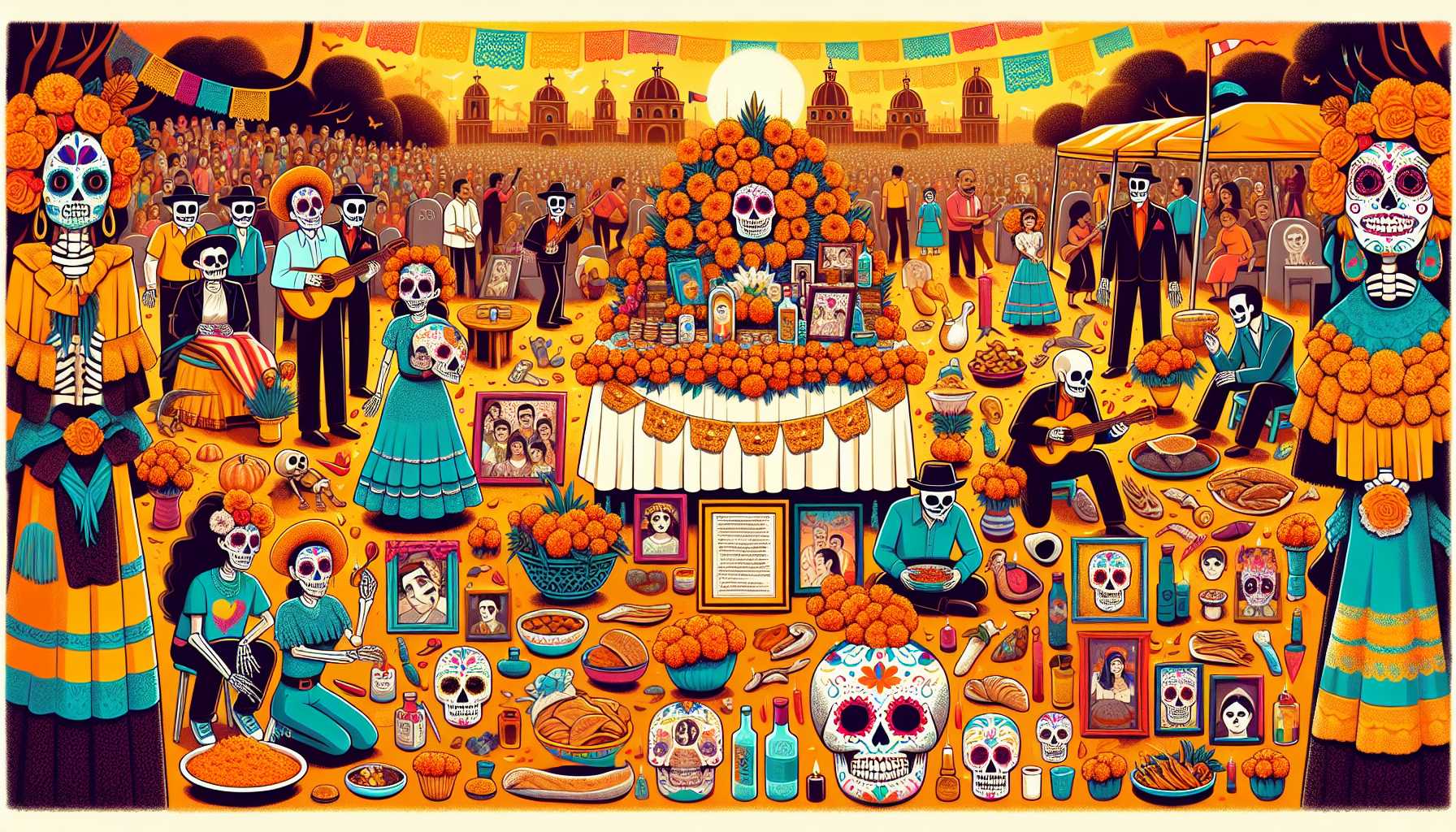
The Vibrant Traditions of Dia de los Muertos Celebrations
The Day of the Dead (Día de los Muertos) is a vibrant Mexican tradition celebrated primarily on November 1st and 2nd, honoring deceased loved ones.
Wánglíng jié (Día de los Muertos) shì yīgè chōngmǎn huólì de mòxīgē chuántǒng, zhǔyào zài 11 yuè 1 rì hé 2 rì qìngzhù, yǐ jìniàn yǐgù de qīnrén.
亡灵节(Día de los Muertos)是一个充满活力的墨西哥传统,主要在11月1日和2日庆祝,以纪念已故的亲人。
This colorful festival combines indigenous beliefs with Catholic influences, creating a rich tapestry of rituals and customs.
Zhège duōcǎi de jiérì jiéhéle tǔzhù xìnyǎng hé tiānzhǔjiào de yǐngxiǎng, chuàngzàole fēngfù de yíshì hé xí sú.
这个多彩的节日结合了土著信仰和天主教的影响,创造了丰富的仪式和习俗。
Families create altars (ofrendas) adorned with photos, favorite foods, and mementos of the departed to invite their spirits back for a day of reunion.
Jiātíng zhìzuò zhuāngshì yǒu zhàopiàn, xǐ'ài de shíwù hé shìzhě yíwù de jìtán (ofrendas), yǐ yāoqǐng tāmen de línghún guīlái, gòngdù tuánjù de yītiān.
家庭制作装饰有照片、喜爱的食物和逝者遗物的祭坛(ofrendas),以邀请他们的灵魂归来,共度团聚的一天。
During the festivities, communities gather to honor and remember those who have passed, often visiting cemeteries to clean graves and decorate them with flowers, especially marigolds, which symbolize death and the celebration of life.
Zài qìngzhù huódòng qíjiān, shèqū jùjí zài yīqǐ yǐ jìniàn hé miǎnhuái shìqù de rén, chángcháng qù mùdì qīnglǐ mùbēi, bìng yòng xiānhuā zhuāngshì, tèbié shì wànshòuju, tā xiàngzhēngzhe sǐwáng hé shēngmìng de qìngzhù.
在庆祝活动期间,社区聚集在一起以纪念和缅怀逝去的人,常常去墓地清理墓碑,并用鲜花装饰,特别是万寿菊,它象征着死亡和生命的庆祝。
The holiday features lively parades, music, dance, and the iconic sugar skulls, all of which contribute to the joyful remembrance of the deceased.
Zhège jiérì zhǎnshìle rènao de yóuxíng, yīnyuè, wǔdǎo hé biāozhìxìng de tángtóugǔ, zhèxiē dōu wèi duì yǐgù zhě de kuàilè jìniàn zuòchūle gòngxiàn.
这个节日展示了热闹的游行、音乐、舞蹈和标志性的糖头骨,这些都为对已故者的快乐纪念做出了贡献。
Overall, Día de los Muertos is a time for celebration rather than sorrow, emphasizing the continuity of love and connection between the living and the dead.
Zǒng de lái shuō, wánglíng jié shì yīgè qìngzhù de shíkè, ér bùshì bēishāng, qiángdiào le shēng zhě yǔ sǐ zhě zhī jiān ài de yánxù hé liánxì.
总的来说,亡灵节是一个庆祝的时刻,而不是悲伤,强调了生者与死者之间爱的延续和联系。
It showcases Mexico's unique cultural heritage and serves as a reminder of the importance of family, memory, and the cycle of life and death.
Tā zhǎnshìle mòxīgē dútè de wénhuà yíchǎn, bìng tíxǐng rénmen jiātíng, jìyì yǐjí shēngmìng yǔ sǐwáng de xúnhuán de zhòngyào xìng.
它展示了墨西哥独特的文化遗产,并提醒人们家庭、记忆以及生命与死亡的循环的重要性。
Based on this article
